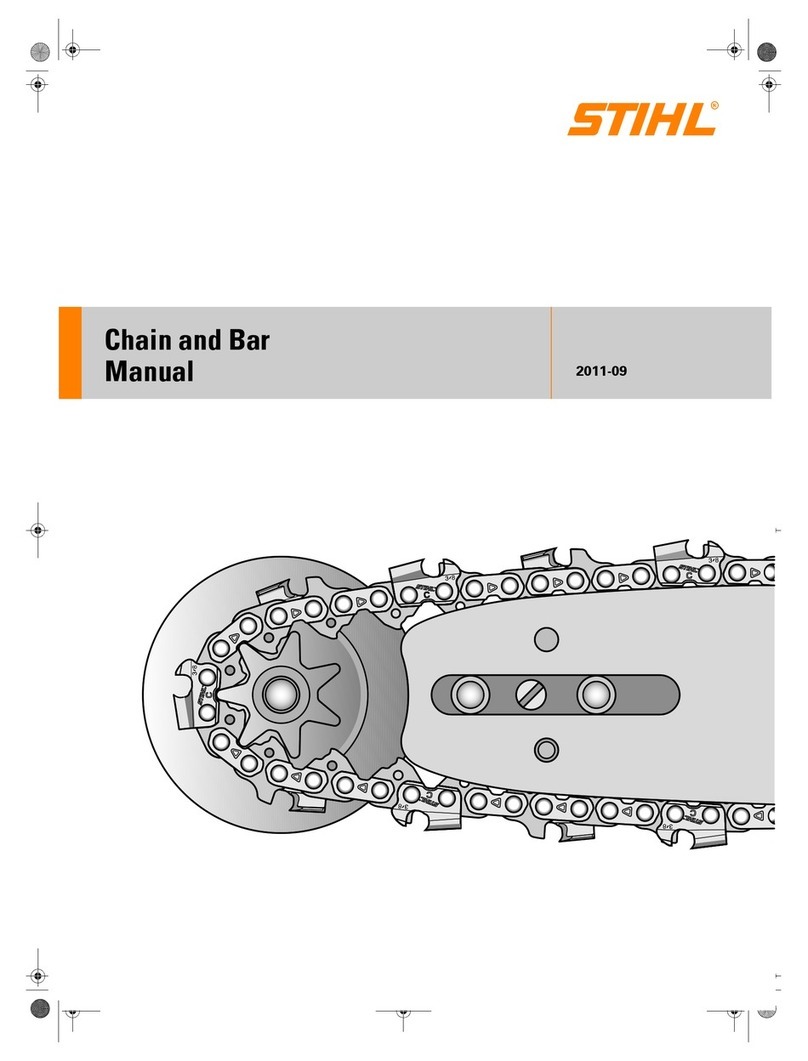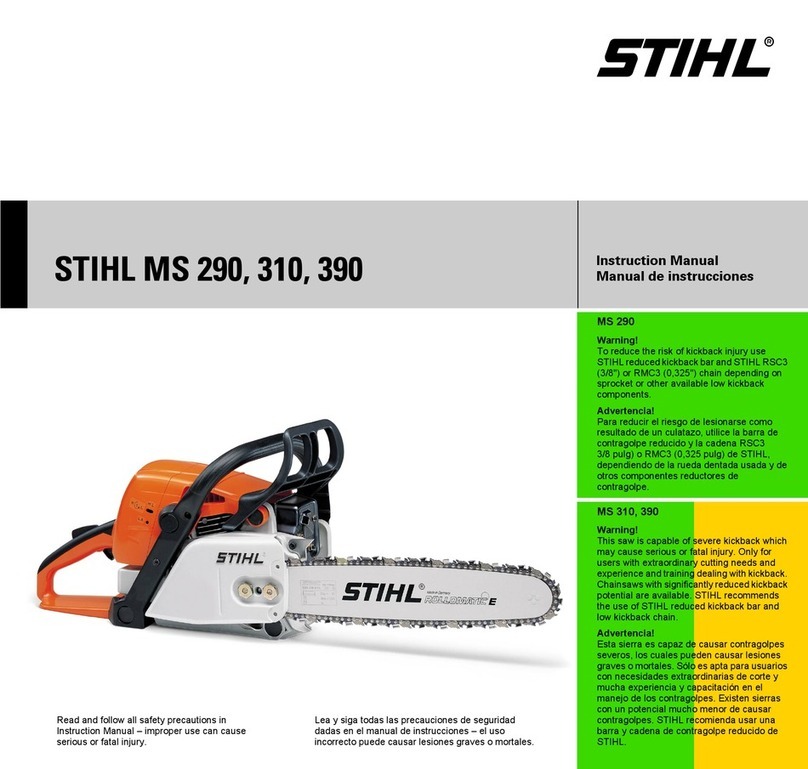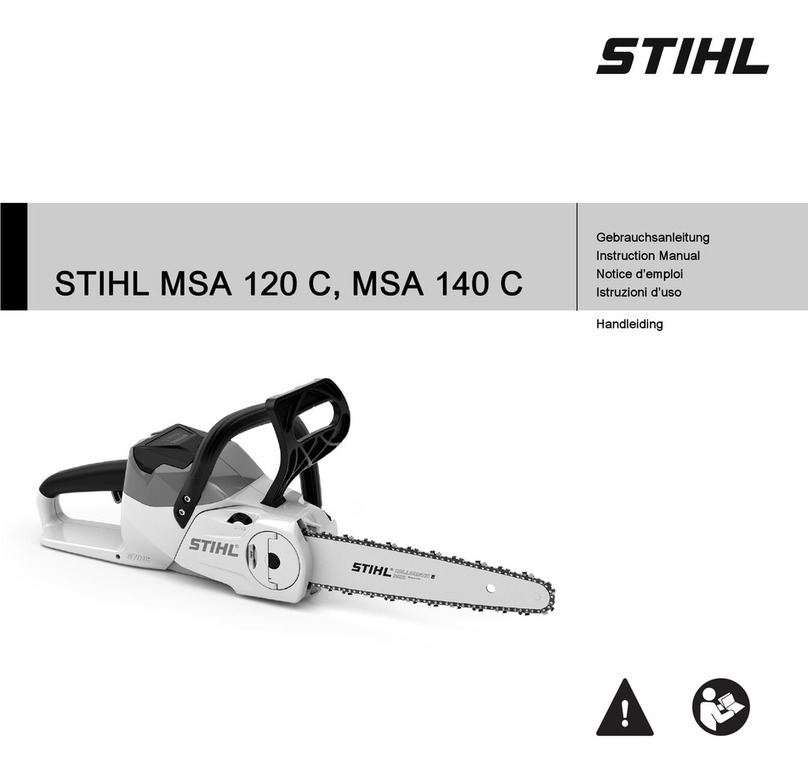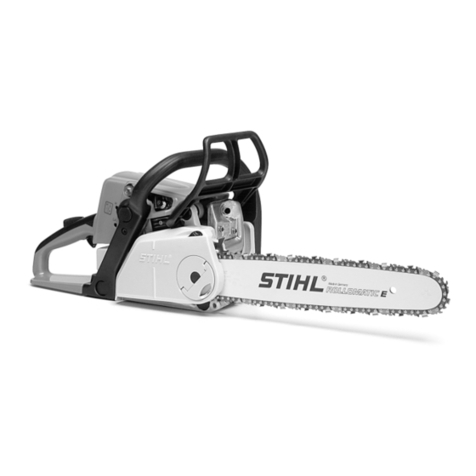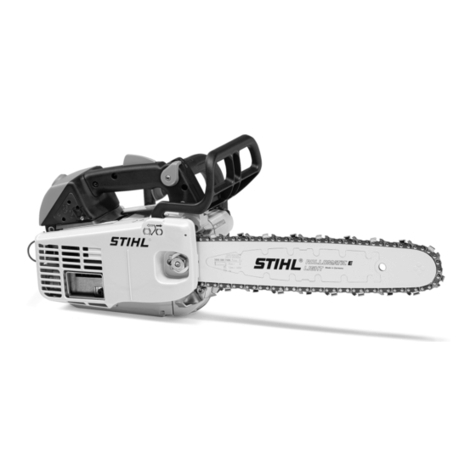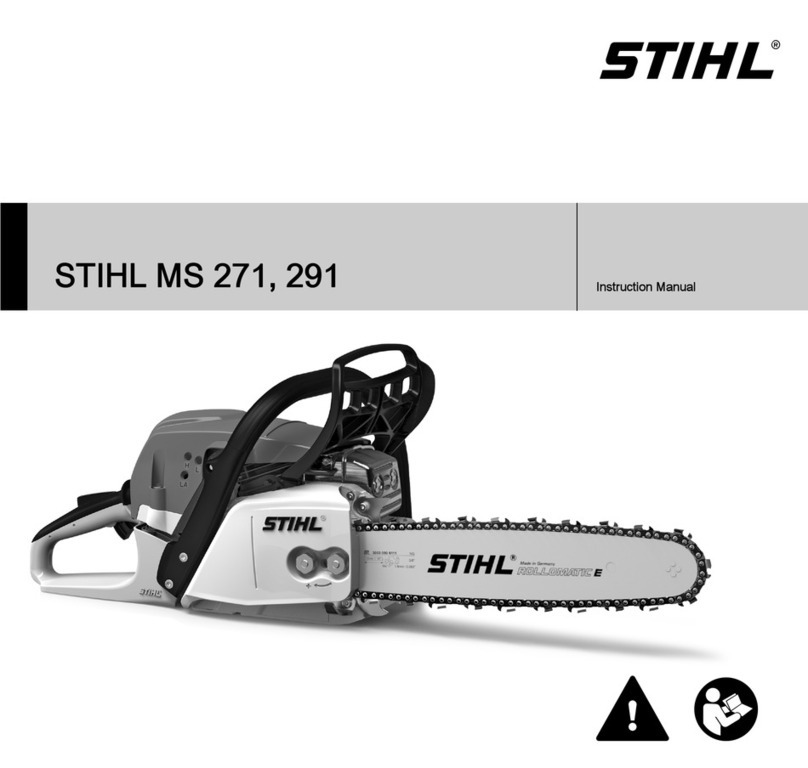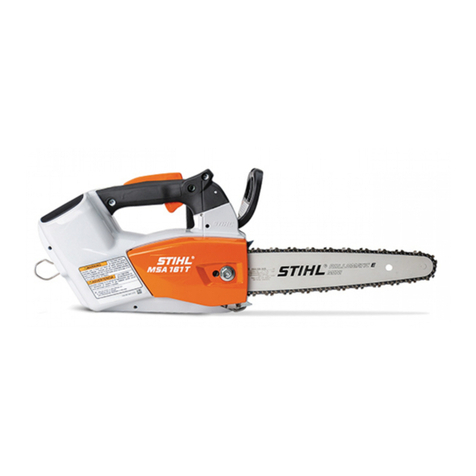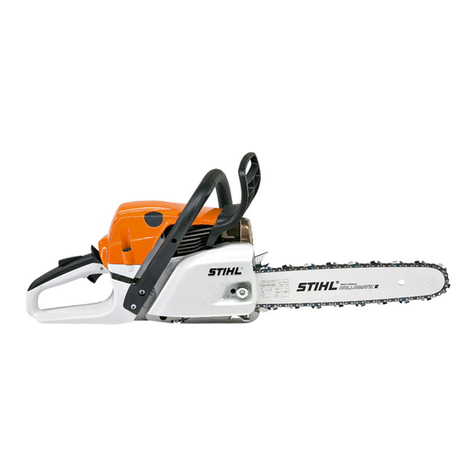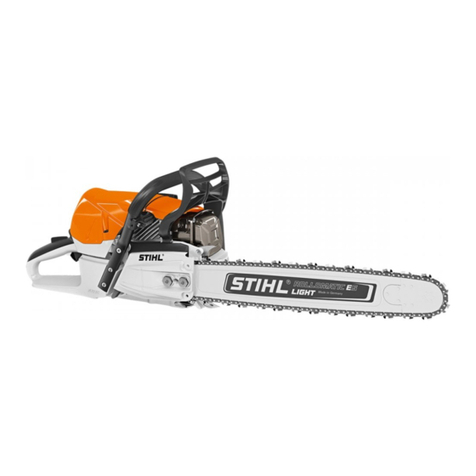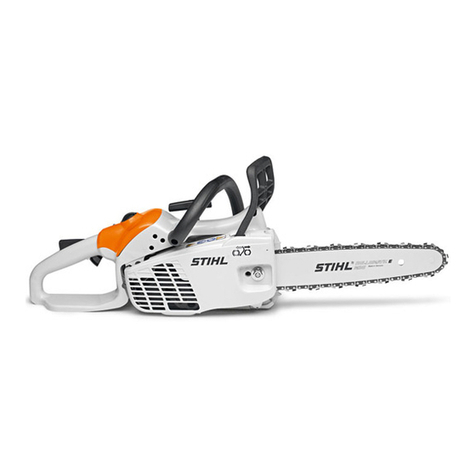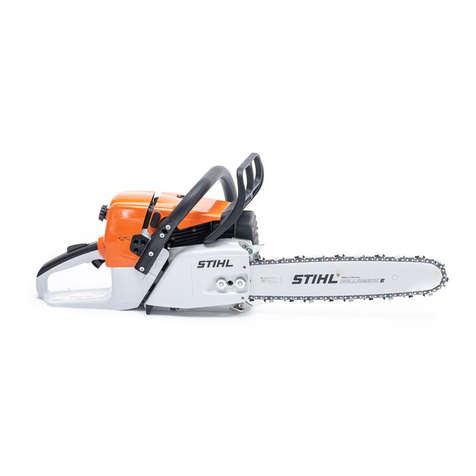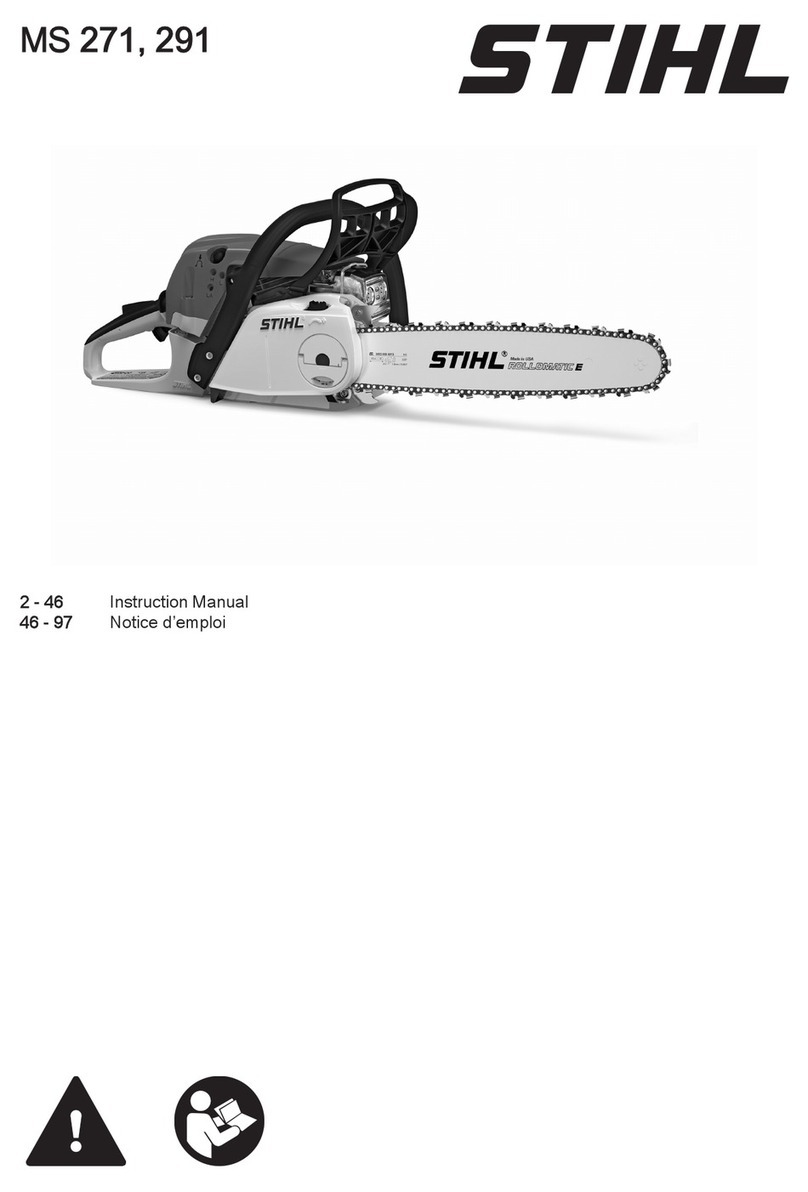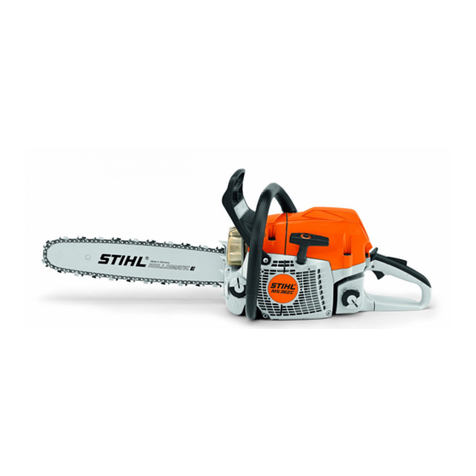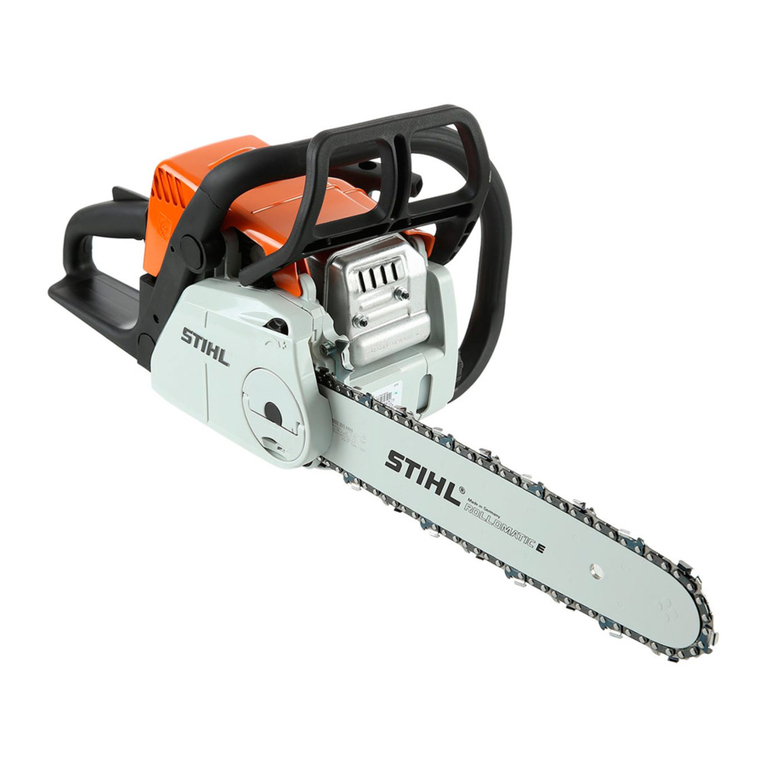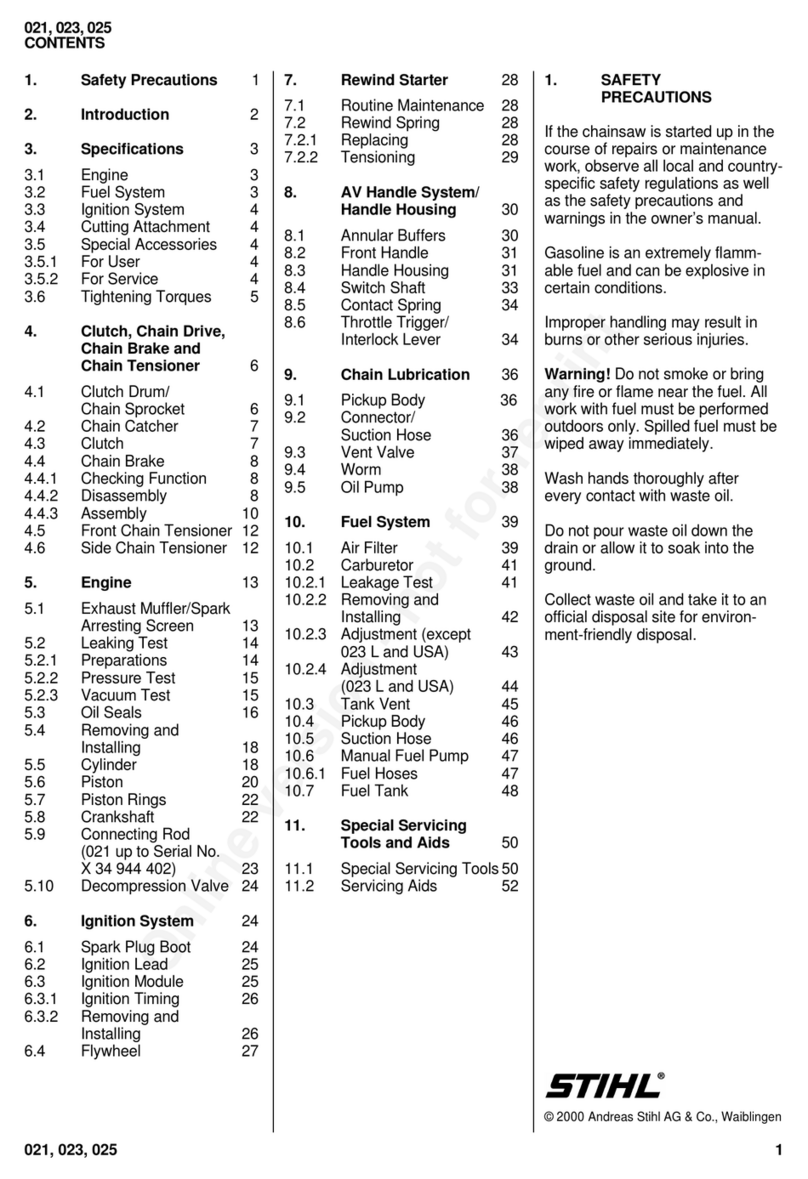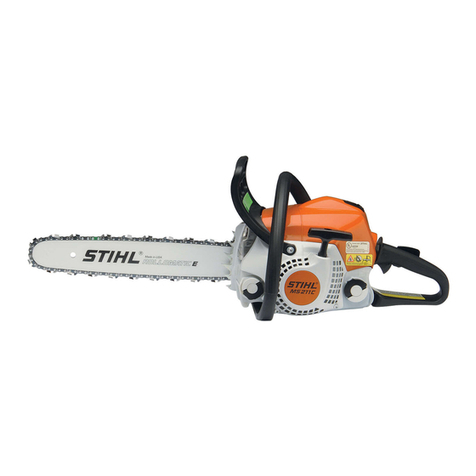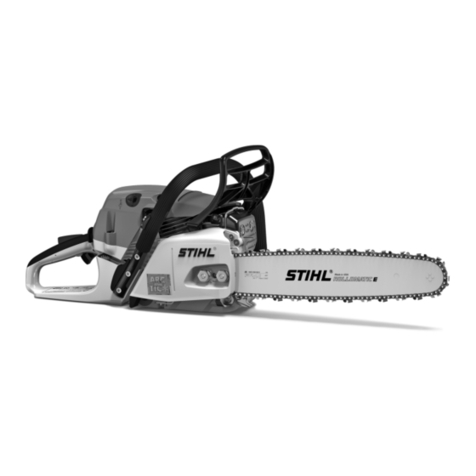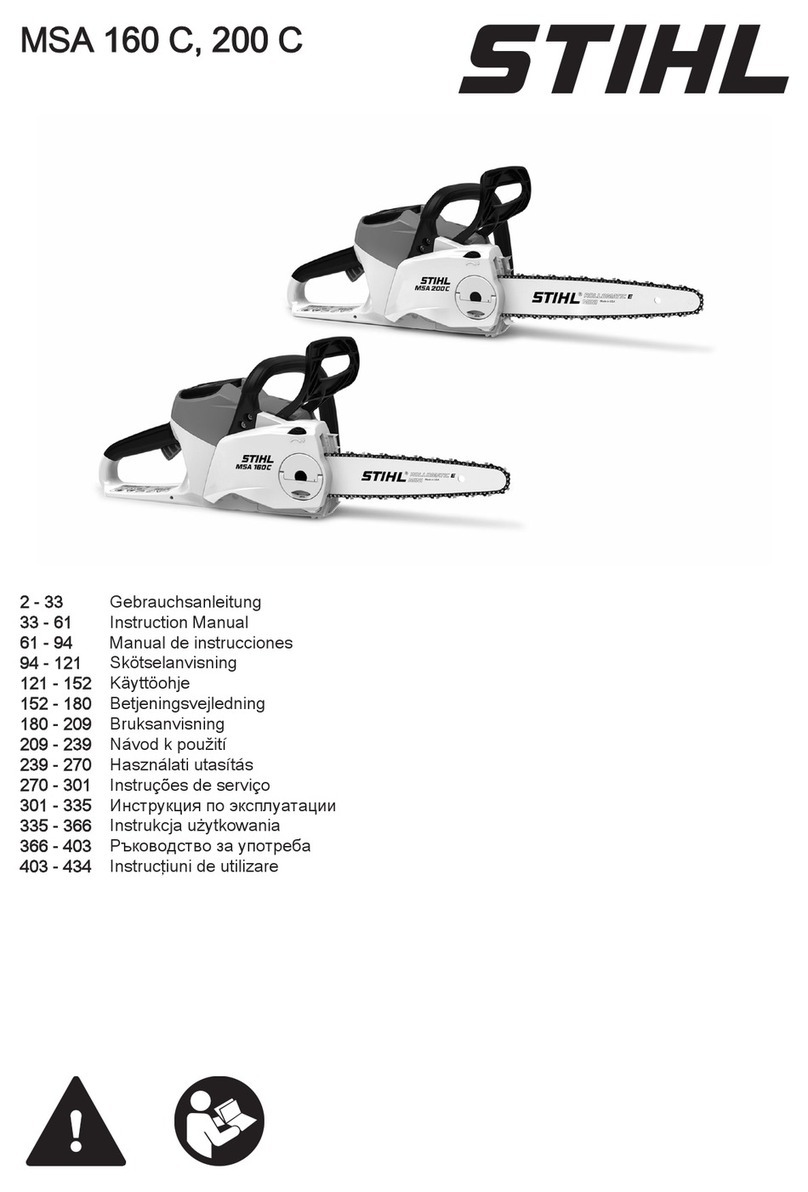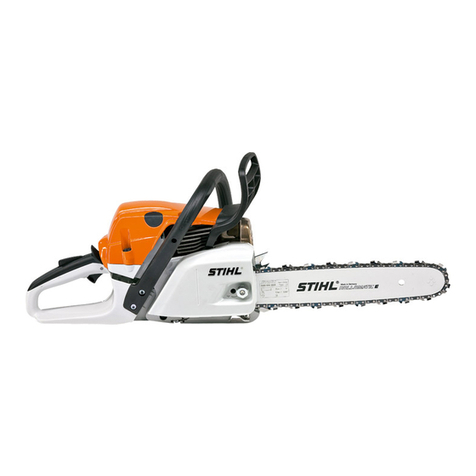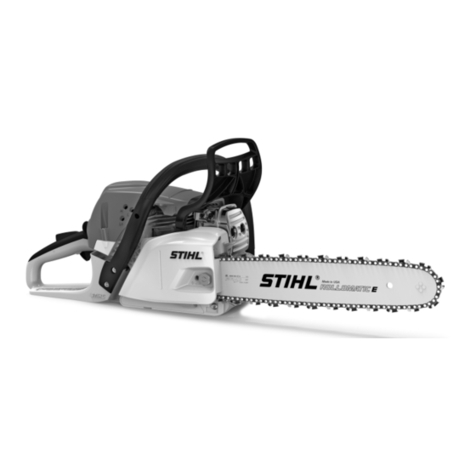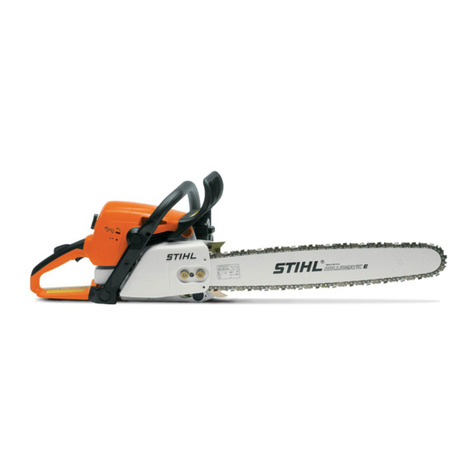2.
CLUTCH,
CHAIN DRIVE AND
CHAIN BRAKE
2
..
1 Construction and
Operation
2
..
1
..
1 Clutch and Chain Sprocket
The transmission of
power
from the
engine to the
saw
chain is effected
via a centrifugal clutch
..
O~
"Quick-
stop"
models, the centrifugal clutch
incorporates an isolating clutch
which
isactuated
bythechainbrake.
On the Quickstop version the hub
screwed to the crankshaft is the
clutch element which absorbs the
torque and acceleration of the
crankshaft.. It is essential that the
hub is always tightened down to the
specified torque
..
The clutch
spider
is supported on the hub
by
a needle
sleeve and located axially with a
circlip
..
The driving plate is located
on
thethree
lugs ofthe clutch
spider
and can move axially while remai-
ning in
constant
mesh with the
spider
..
The flat spring between the
spider and driving plate pressesthe
driving plate against the release
plate; this means
that
the internal
teeth ofthe driving plate are always
in mesh with the teeth of the hub
when the chain brake is released,
and thus provides positive
trans-
mission of engine torque to the
clutch
spider
..
When thechain brake
is actuated, the release plate
dis-
engages the driving plate from the
hUb
..
The clutch
spider
and hub can
then rotate independently.
On the standard version the clutch
spider assumes the function of the
hub and must therefore always be
tightened to the specified torque
..
Chain
brake
engaged
The centrifugal clutch has three
clutch shoes
without
linings
..
The
clutch drum and chain sprocket are
separate components. The
spur
gear
which drives the oil pump is a
ring-gear,
positively
mountedto the
hub of the clutch drum
..
The chain
sprockethastwointegrallycastlugs
which engage in corresponding re-
cesses on the drum hub
..
As the lugs
have odd sizes, the chain sprocket
can only be fitted in one position
..
When the engine is running at idle
speed the clutch shoes are also in
the idle position, because the
ten-
sion of the clutch spring is
greater
thanthecentrifugalforce
..
Asengine
speed increases, centrifugal force
presses the clutch shoes outwards
against the clutch drum and thus
transmit engine torque
positively
via
the chain
sprocket
to the saw
chain
..
The preload and strength of the
clutch spring are designed so
that
7
Chain
brake
released
the clutch shoes begin to make
con-
tact with the clutch drum at an en-
gine speed of approx
..
3100 rpm
(engagement speed)
..
The clutch
engagesfullyabovethisspeed
..
The
correct idle setting on the
carbure-
tor
is therefore essential in
order
to
insure that the clutch engagement
speed is not reached when
the
en-
gine is idling
..

